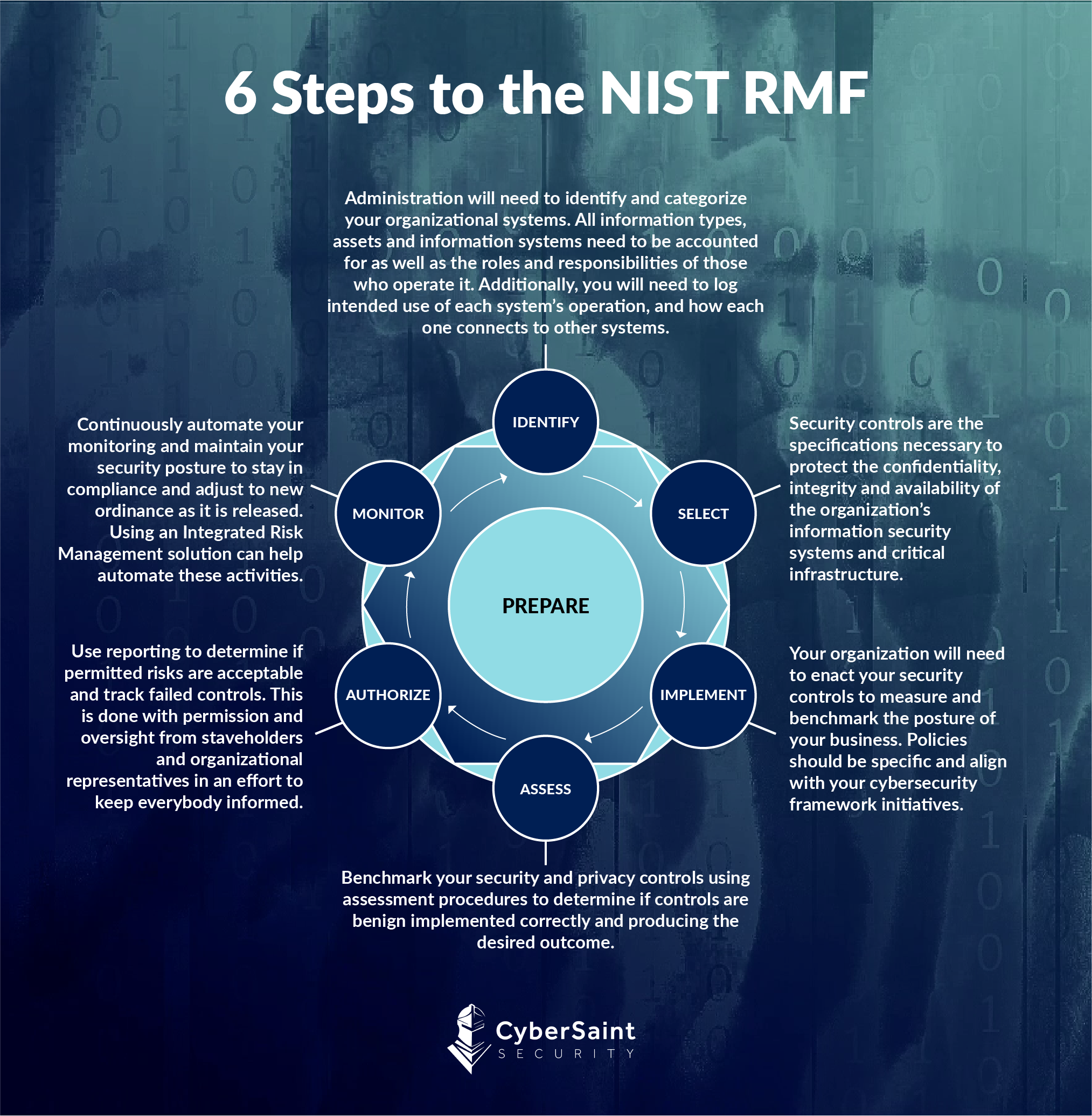Home » Security Bloggers Network » Infographic: The Six Steps of the NIST Risk Management Framework (RMF)
Infographic: The Six Steps of the NIST Risk Management Framework (RMF)
As many organizations begin to mature their cybersecurity program, they are shifting to a risk-based approach to security. In most cases, security leaders are no strangers to leveraging risk management processes to complement the regulations and compliance standards to secure information standards. The RMF is a culmination of multiple special publications (SP) produced by the National Institute for Standards and Technology (NIST) – as we’ll see below, the six steps of the NIST RMF uniquely lend themselves to a given NIST special publication (i.e. NIST SP 800-37 instructs on the monitoring of security controls across the system development lifecycle and NIST SP 800-53 guides teams selecting and implementing security controls to mitigate risk).

To begin aligning with business objectives, information security leaders must embrace the language and to an extent the business processes that other business units have been practicing for years. Information systems and organizations have operated in a siloed function for years, yet with the increased concern from CEOs and Boards, CISOs must now be prepared to communicate organization-wide cybersecurity risk in the same way that the CFO and COO present financial and operational risk respectively.
While the NIST RMF and the supporting documentation was designed to secure federal agencies and federal information systems, similar to the NIST CSF, the gold-standard that these frameworks have set has proven to be of great value to private sector organizations as well to support assessing security controls and determining a control baseline to direct security investments moving forward.
Throughout the information system development life cycle, ensuring that the risks associated with a given strategy and effectively communicating that information to both technical and business-side stakeholders is critical. Using the NIST RMF to guide that process will enable your organization to not only quantify and manage the risks your organization faces but do so in a way that is understood by management and empowering to your security leadership team.
The CyberStrong platform is built on gold-standard frameworks to enable success for both risk management and achieving and maintaining compliance using frameworks like the NIST CSF and RMF. If you have any questions about the NIST RMF, or any other cybersecurity questions, give us a call at 1-800-NIST CSF request a demo.
As many organizations begin to mature their cybersecurity program, they are shifting to a risk-based approach to security. In most cases, security leaders are no strangers to leveraging risk management processes to complement the regulations and compliance standards to secure information standards. The RMF is a culmination of multiple special publications (SP) produced by the National Institute for Standards and Technology (NIST) – as we’ll see below, the six steps of the NIST RMF uniquely lend themselves to a given NIST special publication (i.e. NIST SP 800-37 instructs on the monitoring of security controls across the system development lifecycle and NIST SP 800-53 guides teams selecting and implementing security controls to mitigate risk).

To begin aligning with business objectives, information security leaders must embrace the language and to an extent the business processes that other business units have been practicing for years. Information systems and organizations have operated in a siloed function for years, yet with the increased concern from CEOs and Boards, CISOs must now be prepared to communicate organization-wide cybersecurity risk in the same way that the CFO and COO present financial and operational risk respectively.
While the NIST RMF and the supporting documentation was designed to secure federal agencies and federal information systems, similar to the NIST CSF, the gold-standard that these frameworks have set has proven to be of great value to private sector organizations as well to support assessing security controls and determining a control baseline to direct security investments moving forward.
Throughout the information system development life cycle, ensuring that the risks associated with a given strategy and effectively communicating that information to both technical and business-side stakeholders is critical. Using the NIST RMF to guide that process will enable your organization to not only quantify and manage the risks your organization faces but do so in a way that is understood by management and empowering to your security leadership team.
The CyberStrong platform is built on gold-standard frameworks to enable success for both risk management and achieving and maintaining compliance using frameworks like the NIST CSF and RMF. If you have any questions about the NIST RMF, or any other cybersecurity questions, give us a call at 1-800-NIST CSF request a demo.
*** This is a Security Bloggers Network syndicated blog from CyberSaint Blog authored by Justin Peacock. Read the original post at: https://www.cybersaint.io/blog/six-steps-of-the-nist-risk-management-framework





